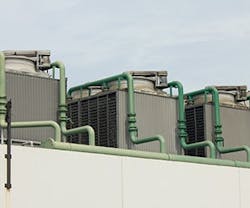Lessons to Learn from Flint's Legionnaires Outbreak
A professor from Virginia Tech, Marc Edwards, released his unpublished results of a study showing that the Flint water crisis most likely caused the deadly outbreak of Legionnaires disease that killed at least 12 people since 2014.
Most notable in this, is that Edwards was the same independent Virginia Tech researcher who found lead in Flint's drinking water back in 2015, when state officials still denied it was leeching into the water. supply.
The engineering professor says he recreated the crisis in his lab this winter and found that the corrosive water created an environment where bacteria could flourish.
"What we discovered was that when the Flint River water went into the system it released a lot of iron, and removed the disinfectant from the water," said Edward in an interview with CNN. "And in combination, those two factors, the iron as a nutrient and the disinfectant disappearing, allowed legionella to thrive in buildings where it could not do so previously."
The water crisis in Flint happened after state officials made a temporary switch in the water supply and did not properly treat the water with an anti-corrosive agent. That decision caused the harsh water to eat away at the pipes as it traveled to homes. Lead pipes leeched lead into the water, poisoning hundreds. Iron pipes leeched iron, thus creating conditions for the Legionnaires outbreak.
Previously, BUILDINGS has addressed Legionella and how to avoid it. ANSI/ASHRAE 188-2015 provides a framework and basic requirements for water management, but it is not a cure-all. To help, the CDC released a Legionella tool kit that includes a checklist to identify whether a water management program is needed, examples of where Legionella thrives, and tips to reduce contamination risk, as well as a guide to developing a water management program that meets industry standards.
It can not be overstated how important it is to prepare your water management systems to avoid destroying your building's image, exposing yourself to legal risk and the possible end of your career. Above all, the lives that could've been spared in places like Flint, MI, and New York City, NY, in recent years are reason enough to implement a thorough, clean water program in your building.
